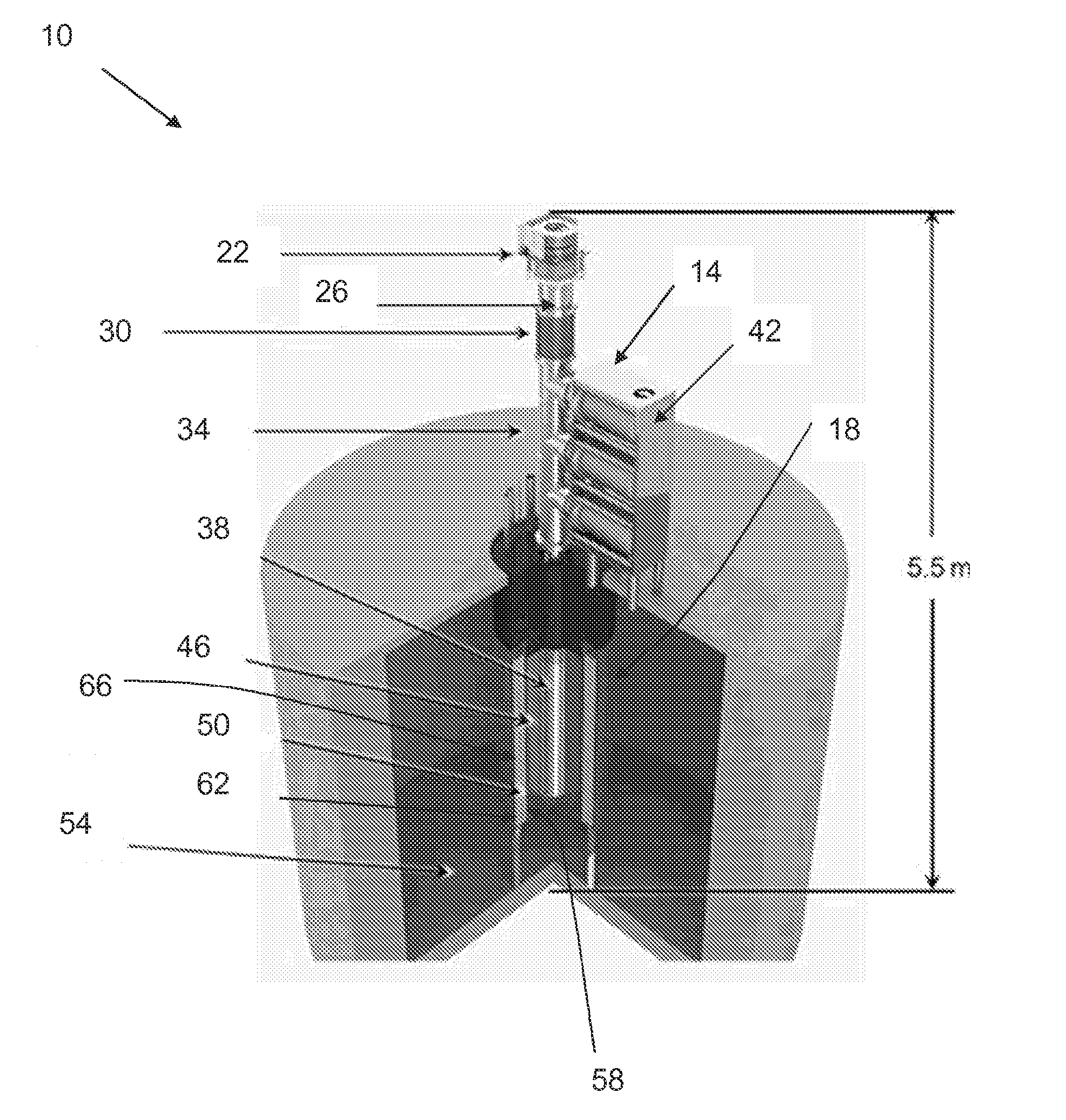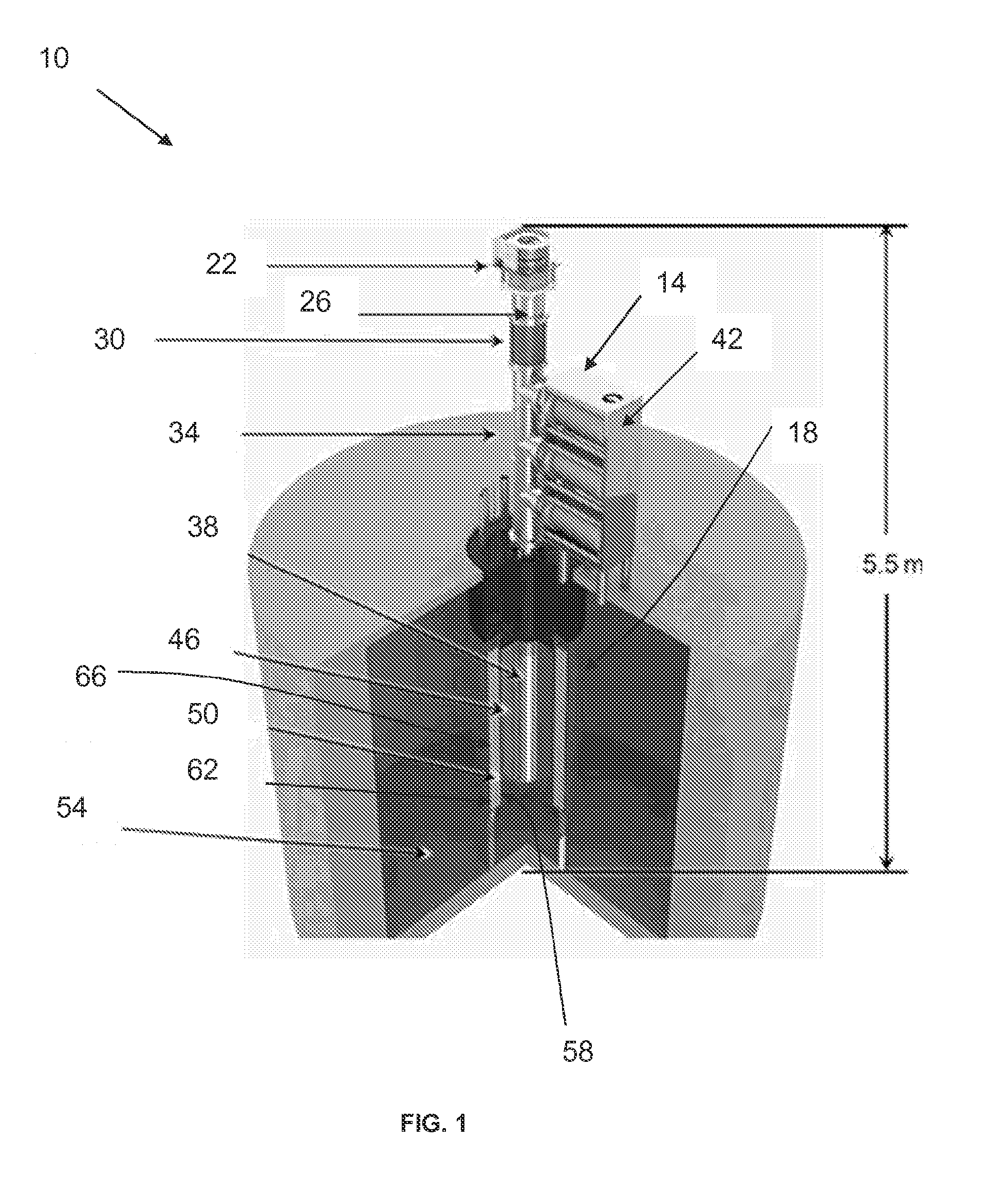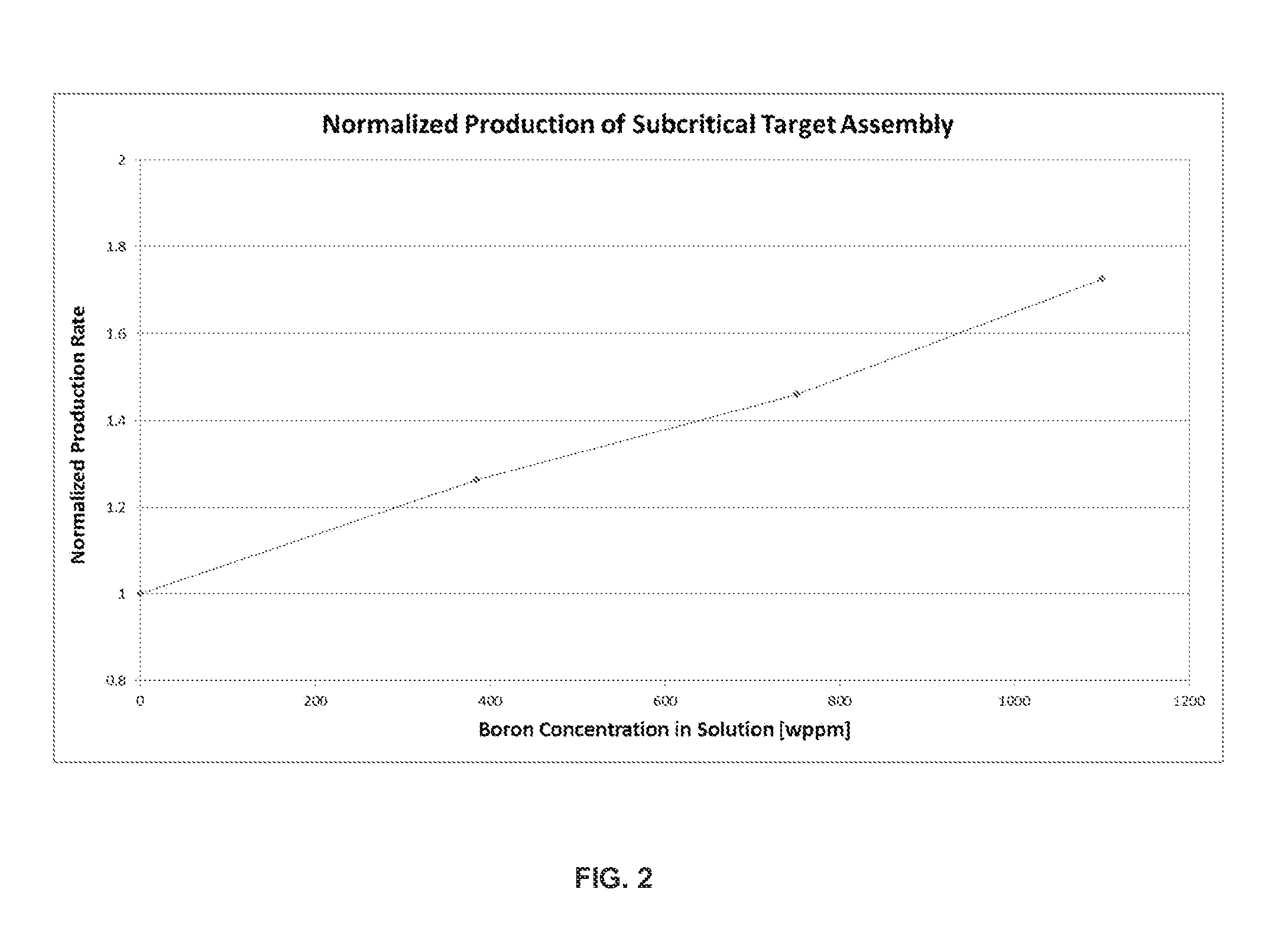Aqueous assembly and control method
a technology of aqueous assemblies and control methods, applied in the direction of nuclear reactors, greenhouse gas reduction, nuclear elements, etc., can solve the problems of limiting the operating parameters of the aqueous assembly, large negative temperature and void coefficients of reactivity of the assembly, etc., and achieve the effect of reducing the magnitude of the negative coefficient of reactivity
- Summary
- Abstract
- Description
- Claims
- Application Information
AI Technical Summary
Benefits of technology
Problems solved by technology
Method used
Image
Examples
example 1
[0045]The subcritical hybrid is provided, including the neutron source assembly, neutron multiplier, and aqueous assembly. An aqueous solution is provided in the TSV. The aqueous solution includes a fissile solute, including LEU.
[0046]Desired concentrations of boron, or other reactivity stabilizers, may be calculated using a neutronics computer code. An operator may select desired values of keff, αT, and αvoid, and then calculate a boron concentration. Other input values to the neutronics code include operating conditions of the hybrid assembly, e.g., the geometries of the TSV, shield tank, and neutron multiplier, as well as the volumes, solution chemistry, densities of all materials, source particle energies, nuclear cross section data, and temperatures of all materials.
[0047]Once a desired boron concentration is calculated, a boron or boric acid addition is prepared and added to the aqueous solution.
[0048]αT and αvoid are calculated for a desired soluble reactivity stabilizer conc...
example 2
[0051]The aqueous reactor is provided, including the aqueous assembly. An aqueous solution is provided in the reactor vessel. The aqueous solution includes fissile solute of known concentration and enrichment.
[0052]Desired concentrations of boron, or of other reactivity stabilizers, may be calculated using a neutronics computer code. An operator may select desired values of αT, and αvoid, and then calculate a boron concentration. Other input values to the neutronics code may include operating conditions of the aqueous reactor, e.g., the geometries of the reactor vessel and shield tank, as well as the volumes, solution chemistry, densities of all materials, source particle energies, nuclear cross section data, and temperatures of all materials.
[0053]Once a desired boron concentration is calculated, a boron or boric acid addition is prepared and added to the aqueous solution.
[0054]αT and αvoid are calculated for a desired soluble reactivity stabilizer concentration. The two perturbati...
PUM
 Login to View More
Login to View More Abstract
Description
Claims
Application Information
 Login to View More
Login to View More - R&D
- Intellectual Property
- Life Sciences
- Materials
- Tech Scout
- Unparalleled Data Quality
- Higher Quality Content
- 60% Fewer Hallucinations
Browse by: Latest US Patents, China's latest patents, Technical Efficacy Thesaurus, Application Domain, Technology Topic, Popular Technical Reports.
© 2025 PatSnap. All rights reserved.Legal|Privacy policy|Modern Slavery Act Transparency Statement|Sitemap|About US| Contact US: help@patsnap.com



